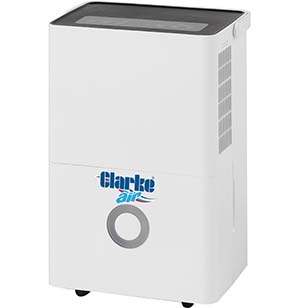-
All Products
- Power Tools
- Air Compressors
- Air Tools & Accessories
- E-Bikes, Tools & Accessories
- Camping & Caravanning
- Cast Iron & Steel Stoves & Accessories
- Cleaning
- Clothing & Footwear
- Construction
- Drill & Screwdriver Bits
- Electrical & Electronic
- Engines, Electric Motors
- Fans, Air Conditioners & Ventilation
- Garage Equipment
- Gardening & Outdoor
- Generators
- Hand Tools
- Health & Safety
- Heaters - Electric, Gas, Diesel
- Air Compressors
- Wood Burning Stoves
-
Garage Equipment
Workshop Cranes & Engine Stands
Vehicle Battery Chargers
Engine Starters/Chargers
Jump Starts
Motorcycle Lifts, Stands & Dollys
Air Compressors
Grease Guns, Cartridges & Dispensers
Trolley Jacks & Car Jacks
-
Tool Chests & Storage
Shelving and Racking
All Tool Chests and Cabinets
Modular Workshop Systems
Clarke Mechanics' Tool Chest Range
Clarke Professional Tool Chests
Clarke Premium Tool Chests
Clarke Heavy Duty Tool Chests
Clarke Heavy Duty+ Tool Chests
- Fans & Air Conditioners
-
Wood Working
Table Saws & Workshop Saws
Compound Mitre Saws & Mitre Saws
Power Saw Stands
Bandsaws
Bench Belt & Disc Sanders
Planer Thicknessers
Dust Extractors
Dust Extractor Hoses & Accessories
- Generators
- Water Pumps
-
Power Tools
Cordless Drills & Drill/Drivers
Impact Wrenches
Impact Drivers
Mains Power Drills (Non SDS)
Mains Powered SDS, SDS+ and SDS MAX Drills
Cordless SDS & SDS+ Drills
Cordless Screwdrivers
Magnetic Drilling Systems
-
Hand Tools
Tool Kit Sets
Allen, Hex, Torx and Star Key Sets
Allen, Hex, Torx and Star Keys - Individual
Chisels & Punches
Spring Clamps
Files
Glass Cutters
Hammers
-
Welding
MIG Welders
Arc/Tig Welders
Arc Welders
Plasma Cutters
Spot Welders
Petrol & Diesel Driven Welders
Welding Headshields & Goggles
Welding PPE
- Pressure Washers
Flood Recovery
If you are not sure if you're at risk of flooding, The Environment Agency website will enable you to check your area. Having a flood plan in place well before a flood occurs will enable you to put measures in place to react swiftly when the water starts to lap up against your doorstep. The Environment Agency has useful advice, which will help you to plan what to do in a flood.
Obviously prevention is better than cure, but water will always find its way through all but the very best defences, so if you know you live in an area prone to flooding, it is a good idea to be ready for the inevitable and have a water pump standing by.
There are several types of pump, each designed with specific problems in mind. Flood water can be divided into three basic categories, with pumps to suit:
- Clean water- rain water, floods from burst pipes etc - No suspended solids
- Grey water - Mildly polluted water from baths, sinks, washing machines etc - With some, small suspended solids. Salt water will probably fall into this category, but you will need a specialist corrosion-proof pump.
- Black water - Sewage etc
In the instance that there is no electrical supply, there are two alternatives.
- A petrol powered pump
- A generator to run an electric pump
The generator option probably offers the most flexibility as it can also be used to power other tools and equipment while you are waiting for your electricity supply to be restored.
If it is raining heavily, while you are installing the pump, you should try to keep warm and dry. Protective, waterproof clothing and footwear should be bought in advance, ready for an emergency. If water continues to rise, it will be wise to relocate essential dry good foods and kettle to an upstairs room so that you can use them safely while waiting to be rescued.
Having your home flooded can be a very upsetting experience and it can be difficult to find the motivation and energy to commence the clean up. Once the water has receded though, you’ll need to think about drying out your property. A dehumidifier will extract water vapour from damp air, speeding up the drying process. Blower/dryers are also available which speed up drying of carpets, walls and furnishings.
If you suspect that the water was contaminated with sewage, care should be taken in undertaking the clear up process. In this instance, protective footwear and rubber gloves should be worn along with goggles and a face mask. If the contaminated waters have been in contact with your soft furnishings these should be disposed of.

Submersible pumps - dirty & clean water

Engine Driven Pumps

Generators

Dehumidifiers